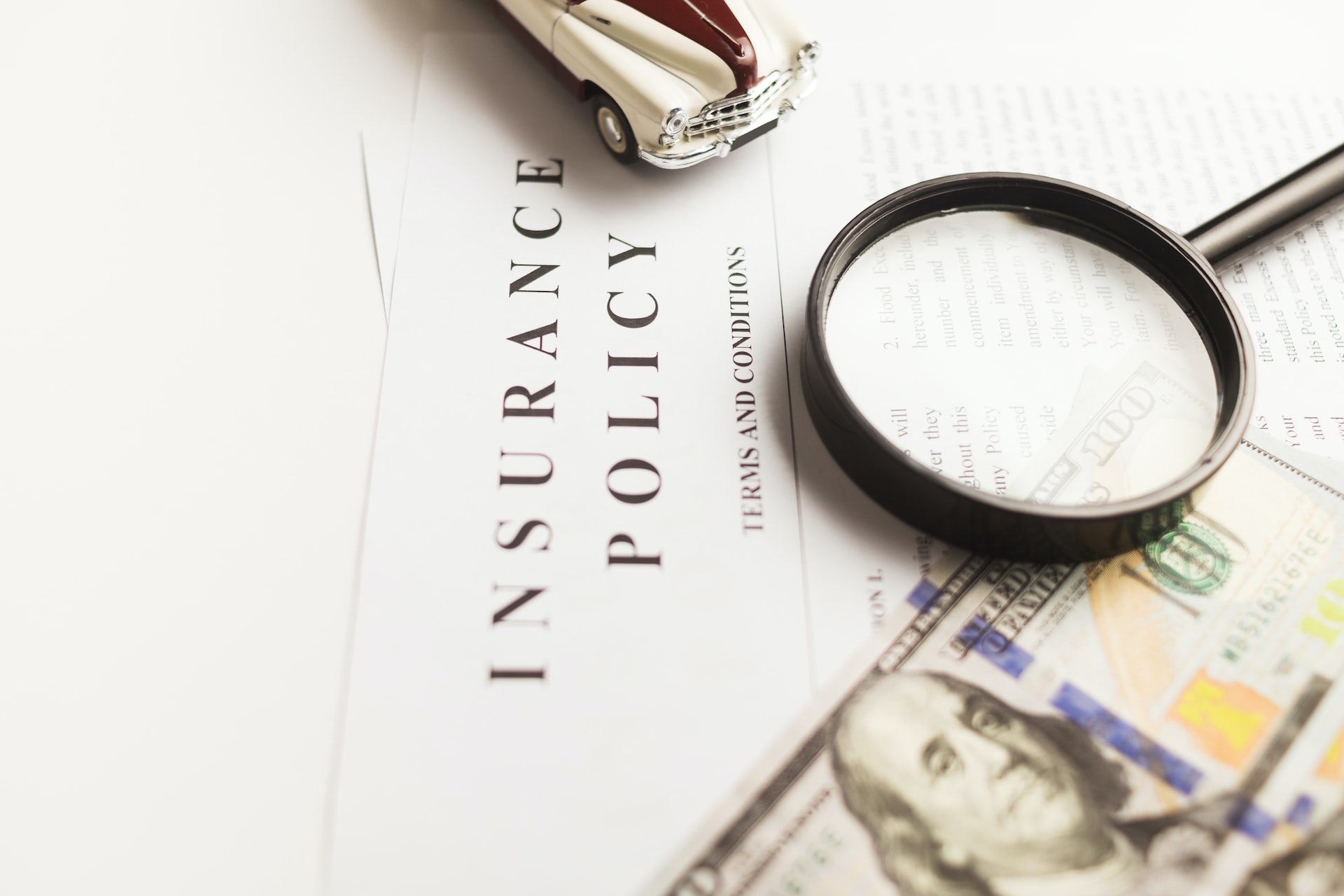On average, consumers spend roughly $148 per month or $1,771 annually on car insurance premiums. But for individuals who opt for the minimum coverage level allowed in their state, this figure drops to $ or $545 annually.
The amount may vary slightly or drastically from the national average. It depends on the provider you select, along with your location, age, credit health, gender and driving record. Auto insurance providers also consider the make, model and mileage of the vehicle that’s insured when setting premiums.
In this guide, you’ll learn more about the factors that affect car insurance rates. You’ll also get insight into the average cost of car insurance per month based on the factors used to determine how much you’ll pay for premiums. Plus, there’s guidance on how to cut the cost of auto insurance premiums and keep more hard-earned money in your pocket, whether you believe you’re overpaying for coverage or want to save more to meet other financial goals.
Factors That Affect Your Car Insurance Rates
Your Credit Score
Some auto insurance providers use insurance-based credit scores to help compute the rate you’ll pay for coverage. Drivers with higher insurance-based credit scores generally have lower premiums since they pose less of a risk for the provider as the chances of them filing a claim or falling behind on premium payments are lower.
To illustrate, the average driver with an excellent credit rating pays roughly $130 in premiums for full coverage. However, drivers with less-than-perfect credit pay $250, which equates to almost double the amount.
This practice isn’t permitted in California, Hawaii, Massachusetts or Michigan, though. Furthermore, you should know that a lower credit score can’t be used as grounds for a policy cancellation, non-renewal or rate increase.
Your Gender and Age
Gender also plays an important role in the cost of car insurance. Generally speaking, men are far more likely than women to be involved in an auto accident. And unfortunately, they pay more in premiums to offset this risk. The same applies to younger, inexperienced drivers who are more likely to have an incident on the road than more seasoned drivers.
For example, a 23-year-old female pays $207.58 per month for full coverage, compared to the average monthly cost of $229.92 for a male of the same age. The cost variance is even steeper for young adults who are 18 years of age – $474.50 in average monthly premiums for males and $412.17 for females.
Mileage of the Insured Car
How often do you drive the vehicle? Is it used for running errands, your daily commute to work, long-distance trips or a combination of these? Your insurance will likely be higher if you drive several miles annually since this means the car is on the road more, and the risk of getting into an accident is higher.
Type of Car
Is your vehicle a sports car that’s more likely to be involved in an accident? Is it a luxury car or truck with high labor, part or replacement cost? Or is it an economy vehicle that is more common among drivers nationwide? These are all questions insurance providers consider when setting premiums, along with the size of your vehicle, the magnitude of the damage it could cause and how many passengers are at risk when riding with you.
Your Driving Record
If you have an exceptional driving record, you may qualify for some of the lowest premiums offered by auto insurance providers. But traffic-related incidents, like accidents, DUI violations and speeding tickets, often equate to higher coverage costs. For example, drivers with DUI convictions will pay an average of $285 per month compared to drivers with clean driving records, who only pay $148 per month on average in auto insurance premiums.
Coverage Level
It’s also vital to distinguish between minimum coverage and full coverage when comparing the average cost of monthly car insurance premiums. Each state has its own minimum coverage requirements, hence the difference in pricing you’ll notice in the charts below. However, drivers have the option to purchase added coverages to shield themselves from incurring substantial financial losses.
Here’s a breakdown of the primary differences between the two:
- Minimum coverage: generally includes personal injury protection (PIP), uninsured motorist coverage, bodily injury coverage and property damage liability coverage
- Full coverage: all the coverages mentioned above plus collision and comprehensive coverage, medical payments, rental car reimbursement, towing services and higher liability limits on all the coverages you select
Average Cost of Insurance Per Month
Below, you’ll find the cost of insurance per month depending on the driver’s state of residence, age, car type, credit rating and prior driving violations (if applicable).
By State
| State | Average monthly cost for minimum coverage | Average monthly cost for full coverage |
| Alabama | $46.50 | $141.75 |
| Alaska | $33.00 | $107.67 |
| Arizona | $47.58 | $136.42 |
| Arkansas | $39.75 | $154.50 |
| California | $52.00 | $163.92 |
| Colorado | $40.75 | $158.25 |
| Connecticut | $67.83 | $138.25 |
| Delaware | $76.50 | $168.92 |
| Florida | $90.42 | $231.25 |
| Georgia | $59.08 | $141.50 |
| Hawaii | $30.42 | $94.00 |
| Idaho | $27.50 | $85.58 |
| Illinois | $39.83 | $115.25 |
| Indiana | $29.08 | $94.42 |
| Iowa | $19.75 | $94.25 |
| Kansas | $39.17 | $149.25 |
| Kentucky | $71.58 | $201.92 |
| Louisiana | $76.67 | $248.83 |
| Maine | $30.33 | $89.50 |
| Maryland | $75.67 | $165.58 |
| Massachusetts | $38.00 | $96.92 |
| Michigan | $73.00 | $173.67 |
| Minnesota | $44.58 | $121.92 |
| Mississippi | $45.75 | $151.58 |
| Missouri | $43.33 | $141.17 |
| Montana | $33.92 | $147.75 |
| Nebraska | $28.75 | $116.75 |
| Nevada | $80.42 | $207.42 |
| New Hampshire | $32.42 | $95.25 |
| New Jersey | $79.75 | $158.42 |
| New Mexico | $33.00 | $121.75 |
| New York | $77.83 | $167.33 |
| North Carolina | $33.50 | $104.58 |
| North Dakota | $29.58 | $102.75 |
| Ohio | $31.67 | $88.83 |
| Oklahoma | $38.17 | $158.83 |
| Oregon | $56.00 | $112.92 |
| Pennsylvania | $37.75 | $127.08 |
| Rhode Island | $69.42 | $172.08 |
| South Carolina | $49.00 | $130.08 |
| South Dakota | $24.92 | $122.17 |
| Tennessee | $33.83 | $117.00 |
| Texas | $49.92 | $143.75 |
| Utah | $53.33 | $133.00 |
| Vermont | $28.00 | $89.50 |
| Virginia | $42.17 | $112.83 |
| Washington (state) | $38.42 | $107.75 |
| Washington, D.C. | $59.83 | $155.58 |
| West Virginia | $41.33 | $131.67 |
| Wisconsin | $29.50 | $100.50 |
| Wyoming | $28.00 | $123.67 |
By Driver Age
| Age | Female | Male |
| 16 | $305.75 | $333.67 |
| 17 | $285.00 | $311.67 |
| 18 | $412.17 | $474.50 |
| 19 | $318.25 | $370.00 |
| 20 | $292.00 | $338.33 |
| 21 | $235.17 | $265.67 |
| 22 | $218.92 | $244.25 |
| 23 | $207.58 | $229.92 |
| 24 | $197.83 | $217.83 |
| 25 | $171.58 | $183.00 |
| 30 | $154.50 | $157.33 |
| 40 | $147.00 | $148.17 |
| 50 | $137.67 | $138.42 |
| 60 | $133.08 | $134.33 |
| 70 | $144.08 | $146.25 |
By Car Type
| Car Type | Average monthly cost for full coverage |
| BMW 330i | $189.00 |
| Chevrolet Equinox | $121.58 |
| Chevrolet Silverado 1500 | $127.00 |
| Dodge Ram 1500 | $136.75 |
| Ford Explorer | $130.83 |
| Ford F-150 | $122.08 |
| Honda Accord | $133.42 |
| Honda Civic | $133.58 |
| Honda CR-V | $113.25 |
| Honda Pilot | $120.17 |
| Hyundai Tucson | $117.17 |
| Jeep Grand Cherokee | $128.58 |
| Jeep Wrangler | $117.17 |
| Nissan Rogue | $127.50 |
| Subaru Forester | $112.25 |
| Subaru Outback | $111.33 |
| Toyota Camry | $136.75 |
| Toyota Corolla | $135.25 |
| Toyota Highlander | $134.75 |
| Toyota Tacoma | $123.08 |
| Toyota 4Runner | $127.83 |
| Tesla Model Y | $189.00 |
*Note: This list is not all-inclusive, as it only includes popular or top-ranked makes and models.
By Credit Score
| Credit Rating | Average monthly cost for full coverage |
| Excellent credit score | $126.67 |
| Good credit score | $147.58 |
| Average credit score | $158.92 |
| Poor credit score | $250.17 |
By Law Violation
| Type of violation | Average monthly cost for full coverage |
| At-fault accident | $210.08 |
| DUI conviction | $285.08 |
| Speeding fine | $178.17 |
By Provider
| Car Insurance Provider | Average monthly cost for minimum coverage | Average monthly cost for full coverage |
| Allstate | $46.50 | $203.17 |
| American Family | $49.33 | $135.58 |
| Amica | $37.00 | $124.58 |
| Auto-Owners | $27.08 | $108.75 |
| Erie | $39.67 | $110.08 |
| Farmers | $45.83 | $127.00 |
| Geico | $30.42 | $108.08 |
| Mercury | $44.00 | $123.58 |
| Nationwide | $45.75 | $115.25 |
| Progressive | $45.17 | $130.08 |
| State Farm | $38.00 | $116.42 |
| The Hartford | $48.58 | $167.83 |
| Travelers | $39.75 | $120.58 |
| USAA | $29.50 | $100.75 |
Source: Quadrant Information Services
4 Ways to Save on Your Car Insurance
1. Raise Your Credit Score
If you live in a state where insurance-based credit scores can be used by providers to set premiums, improving your credit health could help you save money. But before you take any action, first understand how credit scores are calculated. You’ll also want to get a copy of your credit report from the three credit bureaus – Experian, TransUnion and Equifax – as the information inside is used to calculate your credit score.
Here’s a breakdown of how your FICO score – used by 90 percent of lenders and creditors to make lending decisions – is calculated:
- Payment history (35 percent of your credit score): Lenders and creditors want reassurance that you’ll pay your bills on time, hence payment history accounting for the biggest component of your credit score. A strong payment history demonstrates you’ve handled past and current debt obligations responsibly and are less likely to default on future debts. But a shaky payment history means you’ve had trouble keeping up with your debt payments in the past and pose more risk to the lender. In this case, your credit score will probably be lower, especially if you’ve had late payments in the past two years or collection items, tax liens, foreclosures, charge-offs or public records appear in your credit report. Late payments on credit card accounts and loans aren’t reported until 30 days following the due date. So, it’s best to reach out to the credit card company or lender and request a payment arrangement before the due date if you know you’ll be late. Doing so may help you avoid adverse credit reporting. Beyond paying your bills on time each month, it’s equally important to get current and stay current on any past-due obligations.
- Amounts owed (30 percent of your credit score): How much of your credit limits on revolving accounts (i.e., credit cards) are in use? This figure is known as your credit utilization rate, and you should aim to keep it at or below 30 percent to give yourself the best chance at a healthy credit score. To illustrate, if you have three credit cards with $600 limits (or a total of $1,800 in credit), your outstanding balances across the board should not exceed $540. If you can get your credit utilization rate to 10 percent or below, you may see an even greater improvement in your credit score.
- Length of credit history (15 percent of your credit score): Refrain from closing old accounts in good standing, even if you no longer use them. Otherwise, your average age of accounts will decrease. This is also the case when you open new credit accounts, so only apply for credit as needed.
- New credit (10 percent of your credit score): To piggyback off the last point, too many new credit accounts can also ding your credit score since each application for credit results in a hard credit inquiry. They only account for three to five points each, but several in a short period can mean bad news for your credit score. Future lenders and creditors may also perceive you as risky, so only apply for new credit on an as-needed basis.
- Credit mix (10 percent of your credit score): Aim to have a healthy mix of revolving and installment (i.e., personal loans, auto loans, student loans, home loans) accounts. But if you’ve had some financial mishaps in the past and are trying to rebuild your credit health, consider credit-building products, like secured credit cards and credit-builder loans, to help you achieve an optimal credit mix.
Based on this information, you’ll know which areas of your credit profile to focus on to raise your score. If you notice errors while reviewing your credit report, dispute them right away, as they could be dragging your credit score down.
You can also try Experian Boost, a free tool that can help you raise your FICO Score based on Experian data right away. Experian Boost gives you credit for alternative payment data or payments you currently make to utility service providers, streaming service providers and property management companies for rent. To get started, simply sign up for an Experian CreditWorks Basic account, connect the bank accounts used to pay monthly bills, and select the payments you’d like to include in your Experian credit report, and Experian will handle the rest for you.
On average, Experian Boost users who received a boost from non-rental data saw a 13-point increase in their FICO Score based on Experian data. However, the impact you receive will depend on your credit profile. Also, know that by signing up for a CreditWorks Basic account to start using Experian Boost, you’ll also get a free Experian credit report and score, a dark web surveillance report, access to the loan and credit matching tool, FICO score monitoring, Experian credit report monitoring and more.
2. Find a Lower Rate
Even if you’ve been with your auto insurance company for some time, that doesn’t automatically mean you shouldn’t look elsewhere. There could be a lower rate available to you for the same level of coverage you currently have.
Consider using Experian BillFixer to lend a helping hand. It’s a tool that negotiates bills on your behalf, and you get to keep 100 percent of the savings.
Sign up for a CreditWorks Premium membership to test drive Experian BillFixer. It comes with a seven-day trial, and you’ll only pay $24.99 per month after the trial period ends. You’ll also get access to three-bureau credit reports and scores, identity theft protection services, the FICO Score simulator, Experian CreditLock and a host of other benefits.
3. Insure a Different Car
Can you afford to swap your current vehicle for a different one? Some makes and models are more expensive to insure due to steep replacement costs and pricey parts. There are also instances where certain models are known as speed machines, and the driver is more likely to be involved in an at-fault accident. Either way, it could be worth insuring a different car to save money.
4. Increase your Deductible
You can raise your deductible to lower auto insurance costs. Just be sure that you can afford to pay the higher amount out of pocket in the unfortunate event that you’re involved in an accident or your car is stolen and you have to file a claim.







